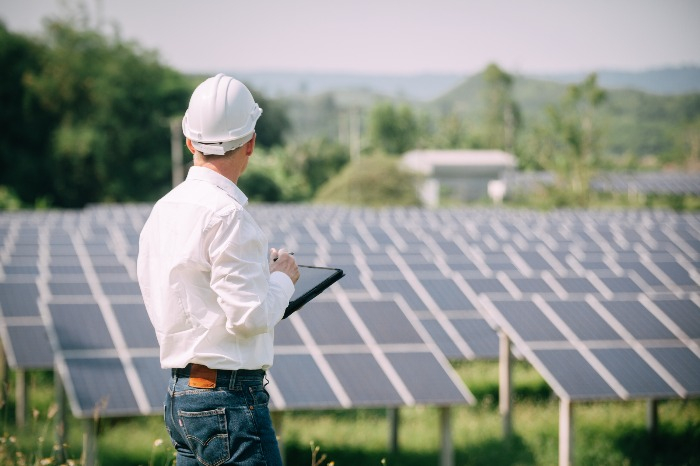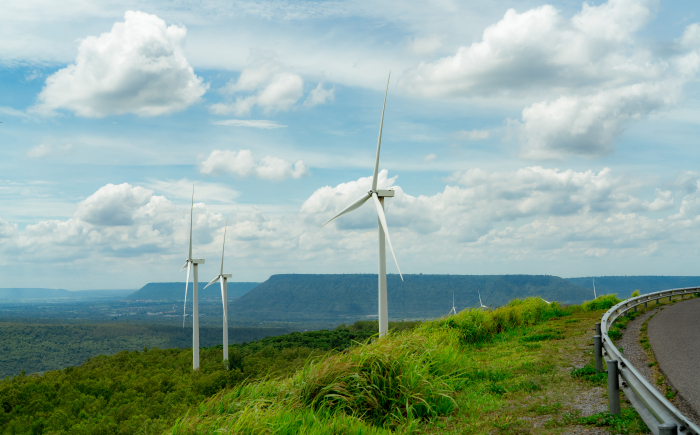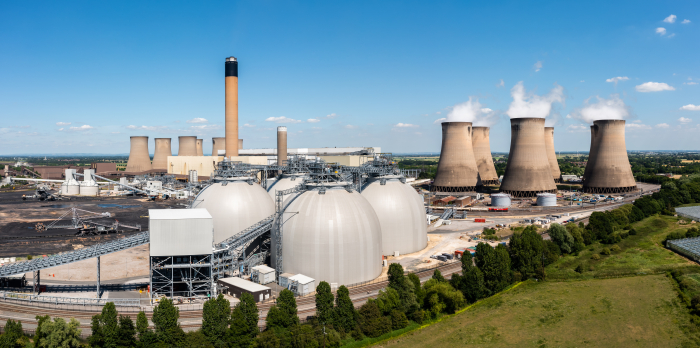Energy
Challenges, opportunities for Asia’s energy transition: GIG
The industry needs stable regulatory regimes, robust infrastructure and efficient policies that boost investments
Jun 07, 2023 (Gmt+09:00)
long read
Most Read
LG Chem to sell water filter business to Glenwood PE for $692 million


KT&G eyes overseas M&A after rejecting activist fund's offer


Kyobo Life poised to buy Japan’s SBI Group-owned savings bank


StockX in merger talks with Naver’s online reseller Kream


Meritz backs half of ex-manager’s $210 mn hedge fund



Global investors injected more than $1 trillion into energy transition for the first time last year. South Korea poured in some $19 billion, becoming the world’s seventh-largest player. Asia represents nearly half of global energy demand, with China and Japan among the world’s top 10 energy transition investors.
But Korea remains relatively immature in comparison to Western Europe, and there needs to be a step change in investment levels to achieve net zero, says Edward Northam, head of Asia Pacific and global head of core renewables at Green Investment Group (GIG) of Macquarie Asset Management.
The challenges are in the delivery and execution of projects where capital can find a home, Northam says. He underscores three factors key to achieving the decarbonization target: stable regulatory regimes, the enhancement of enabling infrastructure and the management of industrial policy.
The following is his article on the global energy transition and the efforts required to be made.

The last year was exceptionally challenging. We faced the first global energy crisis, bringing the energy trilemma back into focus. It was also the year when the energy transition was emphatically endorsed as the answer to the trilemma. Renewables are now the cheapest form of new capacity in most markets. They are often the quickest to deploy and the only form of a new generation that contributes positively to the climate agenda.
For the first time, we saw annual transition investment bursting through $1 trillion, to match fossil fuel investment, around $19 billion of which was made by South Korea. But it still falls well short of what is required to meet our climate goals.
To meet net zero, we need to immediately triple investment levels and inject an annual average of $4.6 trillion for the rest of the decade. This represents a huge challenge and opportunity. When we think about the opportunity, we divide it across two, interrelated strategies, that we call core renewables and beyond renewables.
TWO STRATEGIES
Core renewables are mature green energy technologies like primarily wind and solar. Solar blew through the 1 terawatt (TW) cumulative installation mark last year and we expect wind will do the same this year.
Moving beyond mature renewables, we also see significant opportunities in next-generation technologies which are now beginning to scale. These technologies move beyond the generation of green electrons, to green molecules, emissions removals, and the transition enabling technologies that will deliver the next phase of deep decarbonization across all areas of the economy. It means heating and transport, carbon capture, utilization and storage (CCUS) and low-carbon hydrogen and biofuels.
These two strategies are synergistic and interrelated. For example, mature technologies cannot scale to the levels required without systems enabling technologies, while technologies like hydrogen and electric vehicles’ required vast volumes of renewables to achieve their required levels of deployment. However, the technologies are at different levels of maturity and therefore carry different risk-return profiles that need a different strategy and approach to value creation.
Asia represents almost half of the global energy demand. Therefore, it is critical to a successful energy transition and a significant volume of investment will need to occur in this region. China, Japan and Korea are already in the top ten countries for energy transition investment, with China dominating, spending half in the global energy transition.
Over the rest of this decade, we expect to see an additional 2 TW of renewable energy capacity deployed across the region. Korea has installed roughly 30 GW of wind and solar energy, according to BloombergNEF, and is looking to more than double it to deliver 65 GW by 2030. That will require around 5.5 GW of additional capacity to be added every year.

FOR NET ZERO
We think Korea is particularly well-placed to benefit from the transition. It delivered around $19 billion in energy transition investment in 2022, making it the world’s seventh-largest player. Its advanced manufacturing expertise has enabled the country to get a strong foothold in areas like lithium-ion battery production, where it is the third-largest maker in the world.
Its shipping and logistics heritage provides an almost unique foundation for its burgeoning offshore wind, and in particular, its floating offshore wind sector – the port of Busan is one of the largest in the world. But the market remains relatively immature in comparison to its Western European counterparts, and there needs to be a step change in investment levels if we are to achieve net zero.
The good news is we are continuing to see growing appetite from our clients to invest in the sector. While fundraising for renewables was down in 2022 compared to 2021 levels, it still exceeded 2019 and 2020 combined. It also accounted for around 16% of all capital raised by infrastructure funds. This appetite isn’t limited to mature technologies. We are seeing increasing demand for exposure to the beyond-renewables technologies outlined earlier.

THREE KEY FACTORS
We don’t believe the challenge is access to capital. Rather, it is in the delivery and execution of projects in which this capital can find a home. We believe there are three key enabling factors to achieve this: stable regulatory regimes; enhancement of enabling infrastructure; and the management of industrial policy.
Regulatory certainty is critical to achieving long-term investment with the lowest cost of capital, and ultimately ensuring the lowest cost to consumers.
The UK’s offshore wind market is an example of where long-term, ambitious targets have set the framework for a hugely successful policy and regulatory environment. The 2030 target has given investors confidence in the scale and trajectory of the market.
Coupled with a strong revenue support regime, the UK has managed to deliver almost a quarter of global offshore wind capacity and a 66% cost reduction in just four years. One of its major challenges now – a challenge mirrored across all markets – is the acceleration of consenting timeframes. While we have seen commitments from the European Union and the UK to reduce these timeframes, it remains unclear how they will be achieved.
The scale of the challenge should not be underestimated. The UK’s 2030 target will require around 20 new offshore wind farms to be consented in England and Wales in the next six years - more than double the historic rate. And this would need to be accompanied by a fourfold increase in annual transmission project consents.
Access to grid remains one of the key barriers to deployment in all markets. To achieve net zero, global annual grid investment needs to reach $600 billion this decade, toughly double today’s investment levels.
It has been reported that Korea Electric Power Corp. (KEPCO) has finalized its grid reinforcement plan for the period of 2022-2036. The plan is expected to almost double previous investment estimates. This would be very welcome and we believe that level of investment is likely to deliver the required upgrades.
The challenge will be developing a funding model and then executing the projects within its 10th Basic Energy Plan. However, alongside these challenges, a range of opportunities emerge which have the potential to deliver innovation and progress in growth areas like battery storage and demand response.
Industrial policy is very important in each market. The US Inflation Reduction Act has had an enormous impact, both at home and abroad. Domestically, we have seen significantly increased deployment forecasts across almost all technologies which will accelerate the US’ energy transition – a beneficial outcome for all.
But the IRA is also designed to reshape supply chains to fit US geopolitical priorities and it’s already impacting China’s dominance of clean energy supply chains. While countries with existing trade deals – like Korea – are expected to benefit from this, the picture is less clear for those without, including the EU, the UK and Japan. Anticipated impacts have prompted these countries to introduce defensive policy responses.
For example, the EU’s Green Industrial Plan seeks to reduce barriers to individual countries subsidizing clean tech and provide faster access to EU funding. It is clear the deglobalization of industrial policy will be one of this decade’s key transition thematics. The challenge is ensuring we get the balance between competition and cooperation right to ensure we don’t slow progress in favor of onshoring manufacturing.

Jihyun Kim edited this article.
More to Read
-
 Alternative investmentsClean energy remains top pick for Korean infrastructure investors
Alternative investmentsClean energy remains top pick for Korean infrastructure investorsApr 28, 2023 (Gmt+09:00)
4 Min read -
 Mergers & AcquisitionsMacquarie to buy Lotte’s S.Korean transportation card unit
Mergers & AcquisitionsMacquarie to buy Lotte’s S.Korean transportation card unitApr 05, 2023 (Gmt+09:00)
1 Min read -
 EnergyEnergy transition investment needs flexible approach: Ares Management
EnergyEnergy transition investment needs flexible approach: Ares ManagementOct 28, 2022 (Gmt+09:00)
6 Min read -
 Cloud computingKKR, Macquarie race for $728 mn stake in Korea’s KT Cloud
Cloud computingKKR, Macquarie race for $728 mn stake in Korea’s KT CloudSep 05, 2022 (Gmt+09:00)
2 Min read -

-
 Pension fundsNPS commits $450 mn to Stonepeak, Macquarie infra funds
Pension fundsNPS commits $450 mn to Stonepeak, Macquarie infra fundsJan 11, 2021 (Gmt+09:00)
1 Min read
Comment 0
LOG IN


